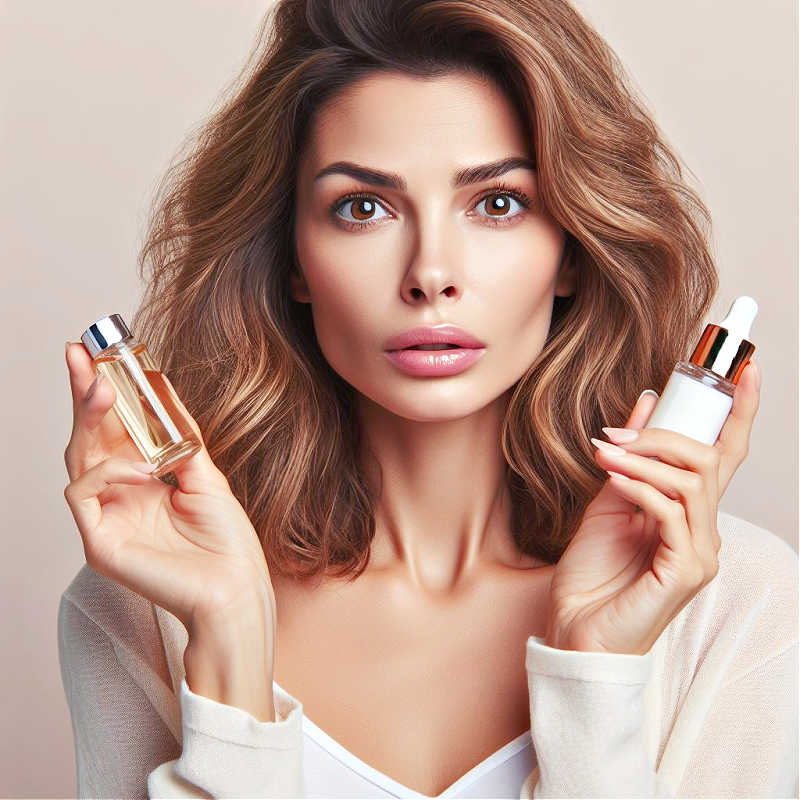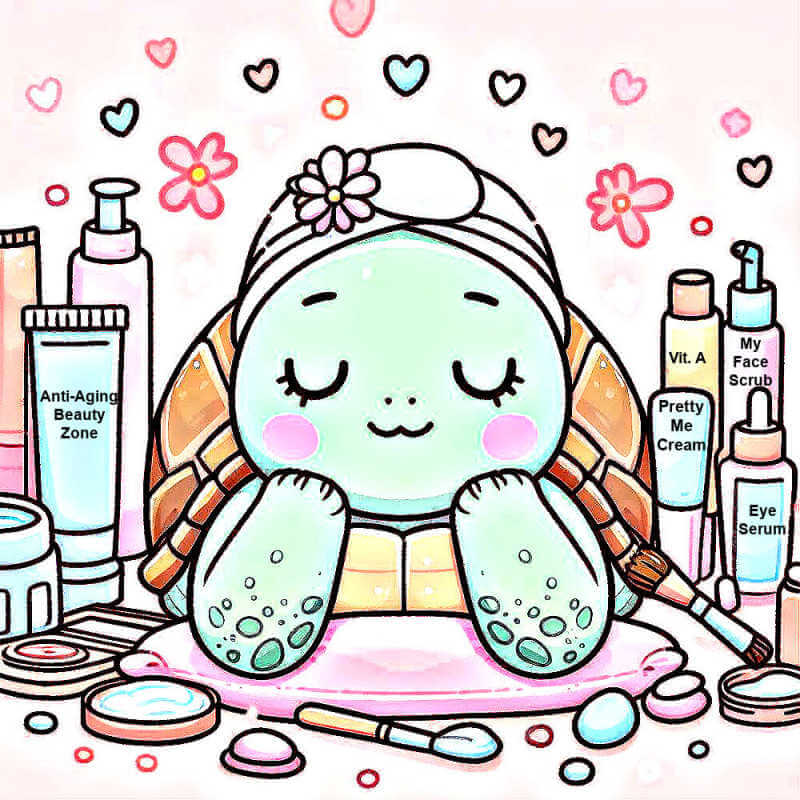- Home
- Retinol Skin Products
- Can I Use Alpha Arbutin With Retinol
I may earn from qualified Amazon & Affiliate purchases at no cost to you.
Can I Use Alpha Arbutin with Retinol?
Navigating the Perfect Pairing for Glowing Skin
by: Linda Robison / Facial Fitness Specialist @ ABZ
Ever wondered, "Can I use alpha arbutin with retinol to lighten age spots and discoloration?" Well, the short answer is yes, But the important question is how can you do it safely without irritation?

I'll break it down for you with step-by-step application, tips for sensitive skin, and the ins and outs of benefits and risks.
Understanding alpha arbutin and retinol
Before we jump in, it's important to break down what alpha arbutin and retinol are.
What is Alpha Arbutin:
Alpha arbutin, also called arbutin, is derived from the bearberry plant, and is a milder derivative of hydroquinone, one of the most potent skin-lightening ingredients.
Often compared with kojic acid, alpha arbutin serum acts by inhibiting tyrosinase activity, an enzyme responsible for melanin production (dark pigmentation). This process makes it a great skin brightener, particularly for those dealing with age spots, brown spots, and uneven skin tone.
While it may be a superhero in tackling those spots, it might also bring some not-so-great stuff along.
According to a study published in the journal Antioxidants, there are potential side effects such as redness, itching, or dryness – not exactly the kind of skin treats you'd want.
Remember, not everyone experiences these side effects; it depends on your skin type and how the product is formulated. Be sure to read the application tips for sensitive skin listed below.
What is Retinol:
You're probably already in the know about retinol, as it's one of the most popular and proven anti-aging skin actives.
This powerful form of vitamin A boosts collagen production, improves the look of fine lines and wrinkles, increases cell turnover, reduces hyperpigmentation and can dramatically improve skin texture and tone.
How to use alpha arbutin and retinol together

For maximum benefits, always apply the alpha arbutin first, since it's water-soluble and can penetrate the skin more better. Give it a solid 20 minutes before introducing retinol to ensure complete absorption.
Step-by-Step Application:
1. Cleanse your face using your favorite cleanser and dry it well.
2. Apply a small amount alpha-arbutin and let it absorb it completely.
3. Now, it's retinol time. Apply just a pea-sized amount to your skin.
4. Once absorbed, seal it in with a moisturizer.
How Often Should You Use It?
That depends on your complexion. Start out with once a week, then increase slowly from there. If your skin is not showing signs of irritation, you can gradually increase the frequency to a few times a week.
Remember: Everyone's skin is different, so what works for one person may not work for another. Personally, I can only tolerate arbutin with retinol about two times a week. If you're uncertain, start off slowly or consult with a board-certified dermatologist for personalized advice.
Application tips for sensitive skin
When combined, the two can create a powerful duo for your skincare routine. But, it's important to use them with care so you don't irritate or inflame the skin. Irritation and inflammation ages your complexion!
Suggested Usage Tips
Take it slow. Start by applying a small amount (pea size) of alpha arbutin on one night and retinol on the next, keeping them separate for now. This way, your complexion has a chance to adapt.
Make sure the products are fully absorbed before applying moisturizer.
Risks, Precautions, Side Effects
While these ingredients offer impressive benefits, they aren't without potential issues. Risks primarily revolve around skin irritation, especially for sensitive skin or dry skin. That's why it's important to perform a patch test before applying these ingredients to your face.
If the patch test is fine, then you can begin to apply them to your face. Look out for any signs of redness, tightness, irritation, flaking, or peeling. If that happens, take a break and give your skin some time to chill.
These signs could mean your skin is stressed out, and we definitely want to avoid that because it can speed up the aging process. Listen to your skin and treat it with a little extra TLC.
When you're ready to try it again, take it easy. Reduce how often you use the products, or opt for a milder retinol concentration. Starting with a safe and gentle dose, like 0.05%, is a smart way to ease back into your routine.
Benefits of Using Alpha Arbutin and Retinol Together
The combined use can accomplish more than when used separately. While retinol accelerates skin renewal and reduces signs of aging, alpha arbutin lightens and brightens the skin, reducing spots and hyperpigmentation.
Here's a breakdown of how they work together:
Reduced Appearance of Hyperpigmentation
- Arbutin: Known for its skin-brightening properties, arbutin can help reduce the appearance of dark spots, hyperpigmentation, and uneven skin tone.
- Retinol: Works by increasing cell turnover, which can help fade hyperpigmented areas and promote a more even complexion.
Anti-Aging Effects
- Arbutin: While not primarily anti-aging, arbutin contributes to a youthful appearance by addressing dark spots.
- Retinol: stimulates collagen production, and increases elasticity and firmness while reducing the appearance of fine lines and wrinkles.
Improved Skin Texture
- Arbutin: Contributes to a smoother complexion tone by reducing hyperpigmentation.
- Retinol: Encourages cell turnover, resulting in a more refined and smoother complexion
Prevention of New Dark Spots
- Used consistently, this combination can contribute to preventing new dark spots from forming and aid in maintaining an even skin tone.
How to fit this into other treatments
What if you use other anti-aging skincare treatments?
How do you incorporate alpha arbutin and retinols into your skincare routine if you regularly use lactic or glycolic acid, chemical peels, and vitamin C (ascorbic acid)?
You have to be careful not to overload your skin.
Here's a suggested approach:
Alternate Nights:
- Use alpha arbutin and retinol on one night.
- Use AHAs or skin peels on the alternate nights.
Start Gradually:
- Introduce one new product at a time to assess how your skin reacts.
- Begin with lower concentrations and gradually increase if your skin tolerates it well.
Morning Routine:
- Use a vitamin C serum or other antioxidants in the morning and the others at night.
Adjust Based on Skin Response:
- Always keep an eye out for irritation, redness, or excessive dryness, consider reducing the frequency or concentrations of certain products.
Remember, it's essential to tailor your routine to your individual skin needs and sensitivity. Gradual introduction and careful observation will help you find the right balance for a comprehensive skincare routine.
Take Away: Using alpha arbutin with retinol
In wrapping it up for you, using alpha arbutin with retinol can be a powerful combo for tackling age spots and discoloration on your face. The good news is, you can make it work safely, without any irritation, by following a few steps.
First, remember to apply alpha arbutin before retinol, giving it some time to soak in. The step-by-step application, from cleansing to moisturizing, ensures you get the maximum benefits. How often you use them depends on your skin, so take it slow and pay attention to how your skin reacts.
If you're unsure, a little caution goes a long way. For sensitive skin, start with small amounts on separate nights to let your skin adapt. Keep an eye out for any signs of irritation – we want to avoid stressing out your skin, as it can speed up the aging process.
The benefits of this combo, like reducing dark spots and improving skin texture, are promising. However, there are potential risks, especially for sensitive or dry skin, so a patch test is a must.
Remember, your skin is unique, and so should be your skincare routine. If you're using other treatments, like acids or peels, balance (like alternating days) is key. Take it one step at a time, adjust based on your skin's response, and always listen to what your skin needs.
So, go ahead, try it out, and let your skincare routine be a personalized journey for your skin's best health. Happy skincare adventures!
About the Author:
Linda Robison is a Facial Fitness Specialist and the founder of Anti-Aging Beauty Zone. She shares expert insights on skincare, facial rejuvenation, and beauty treatments—blending traditional wisdom, personal experience, and science-backed research for both at-home and in-office solutions.
Before you go ....
Please tap on the💙in the bottom right corner if you found this page helpful. Also, Let’s CONNECT! Click the buttons below to follow me on social media.
Thanks so much!

